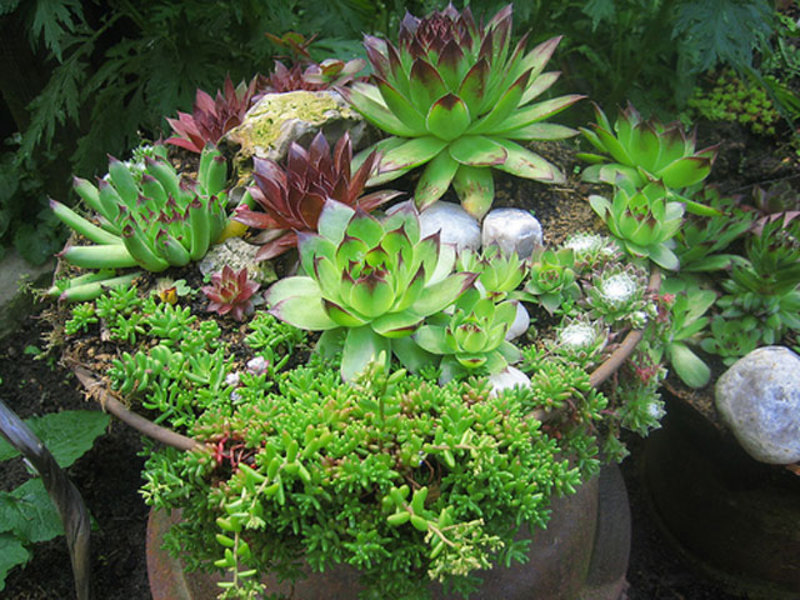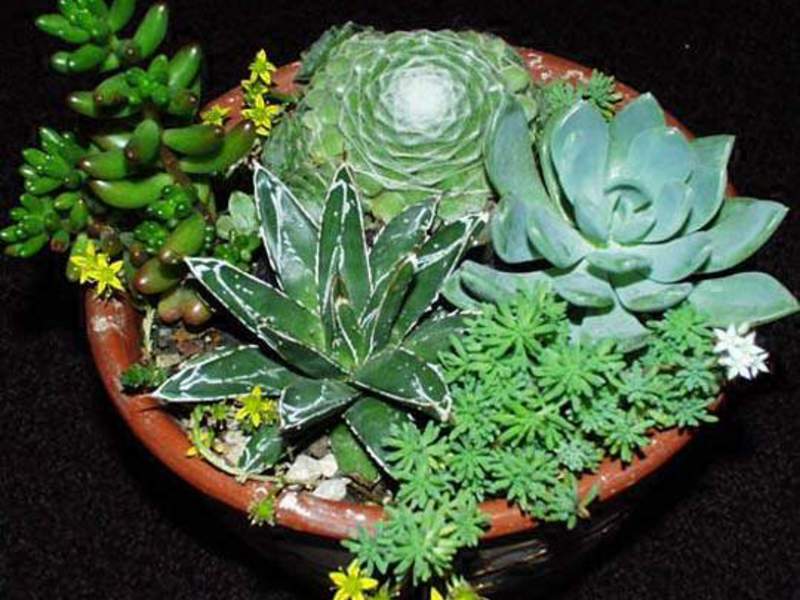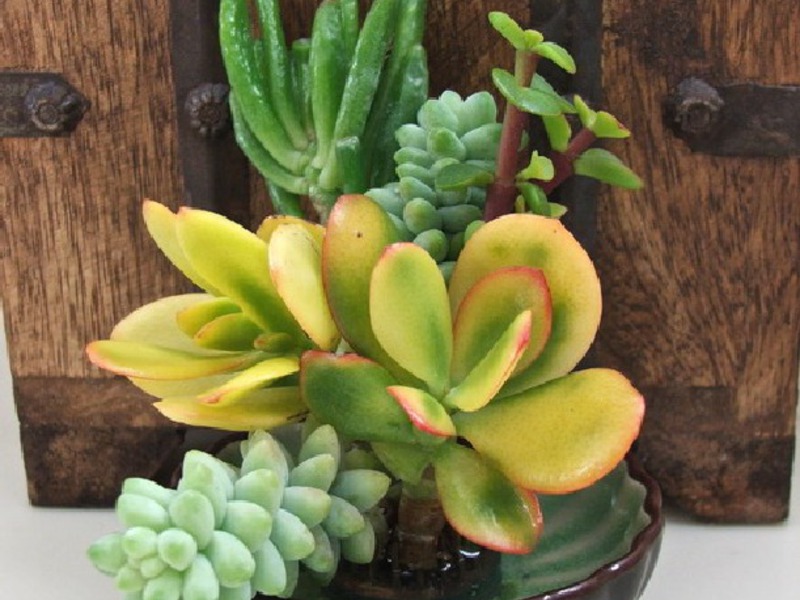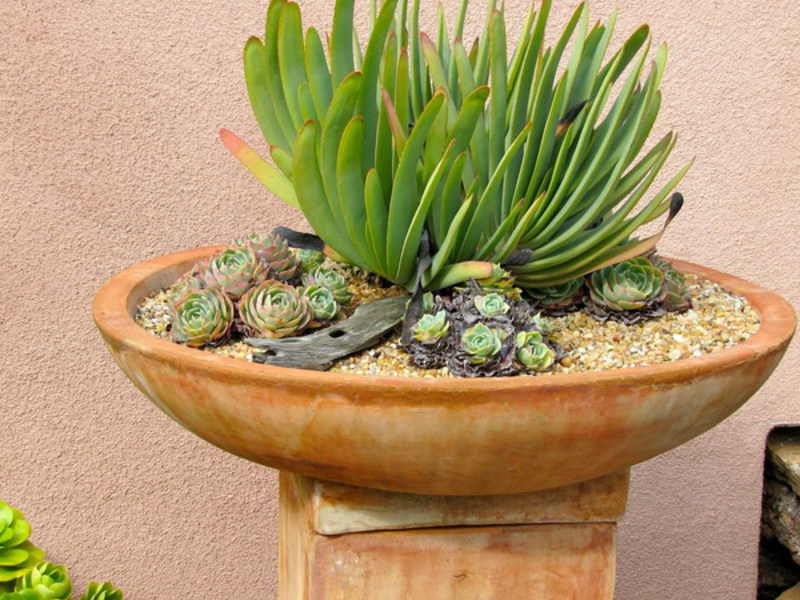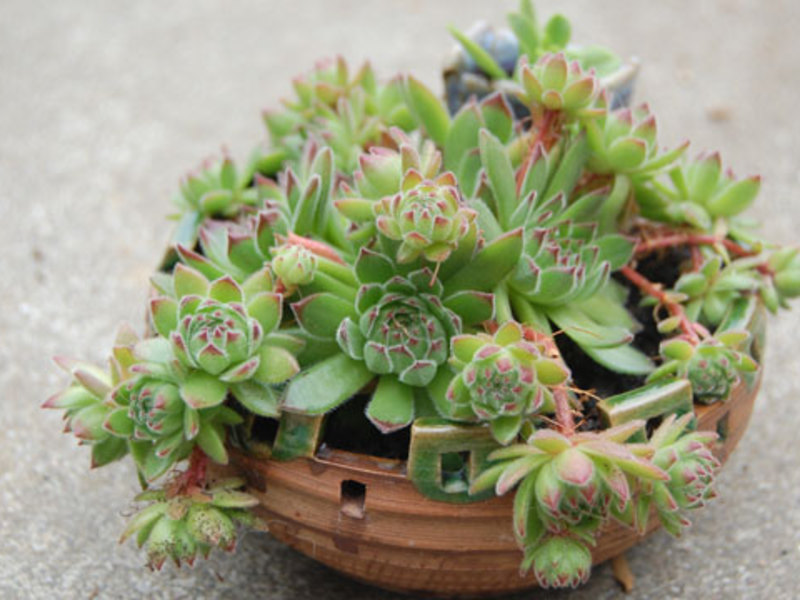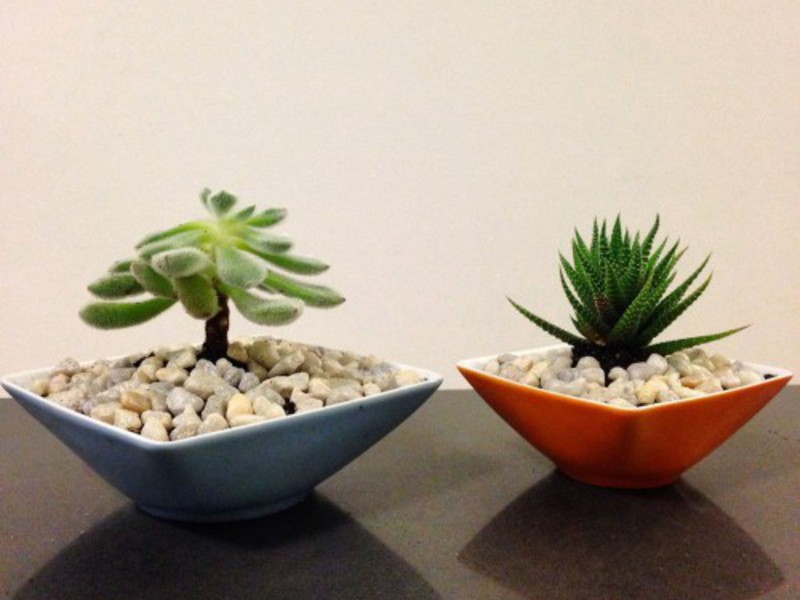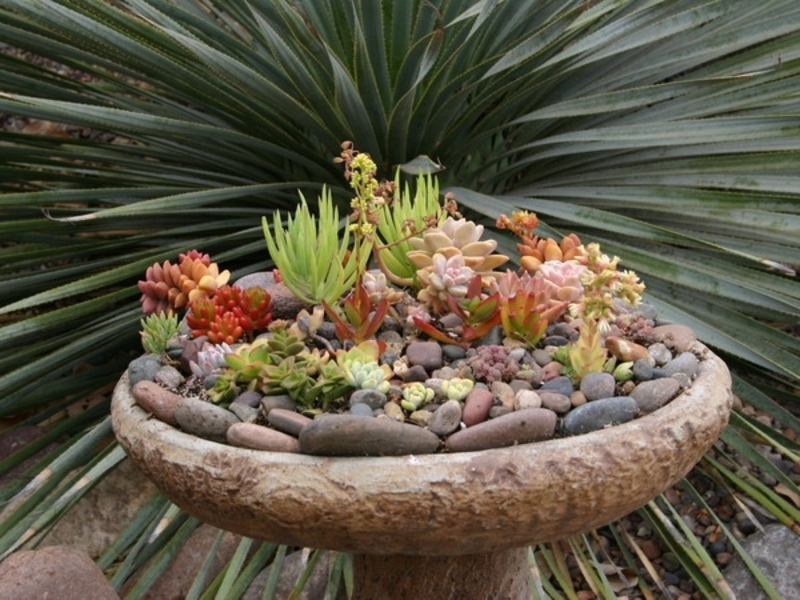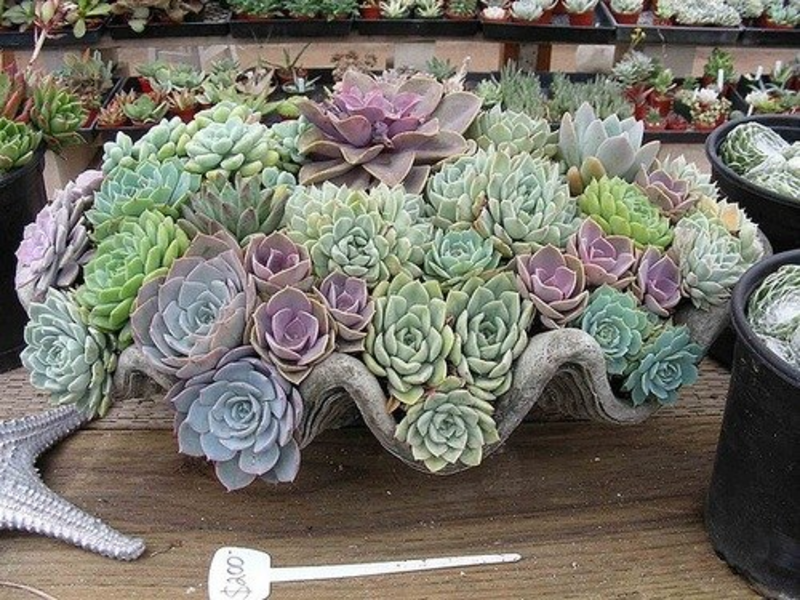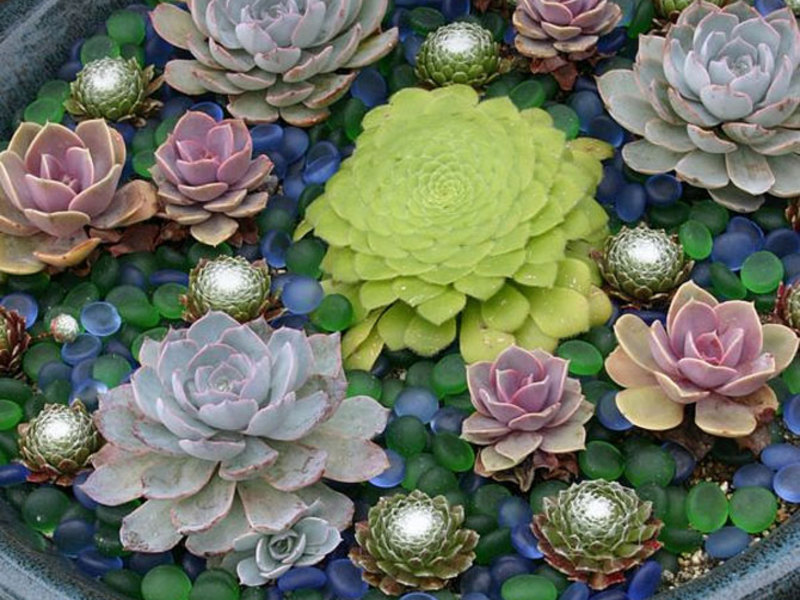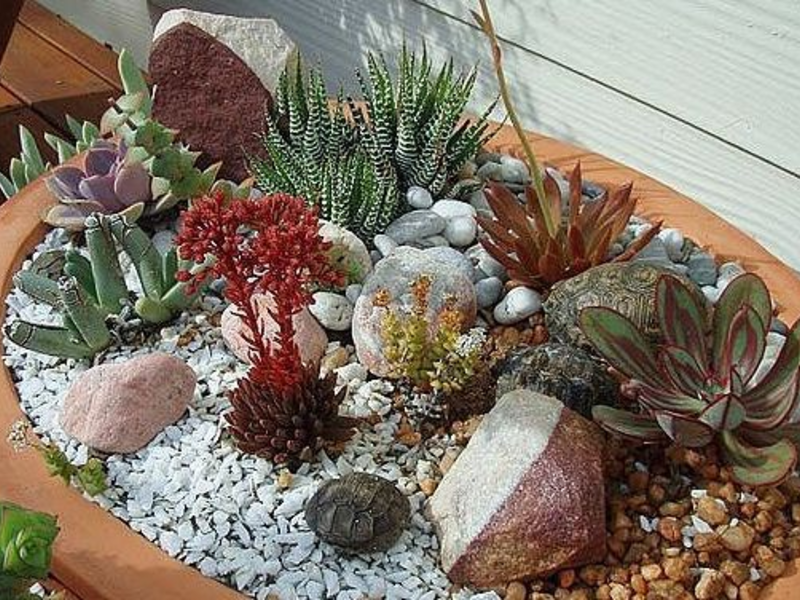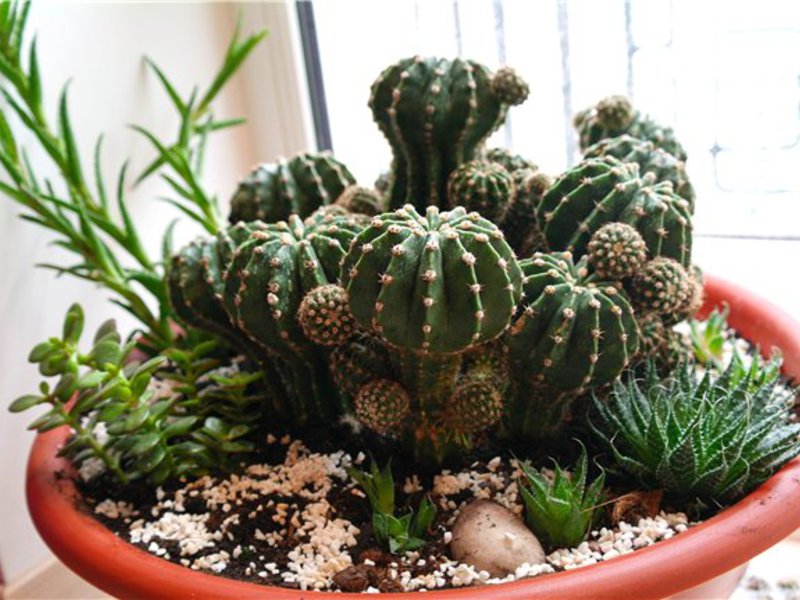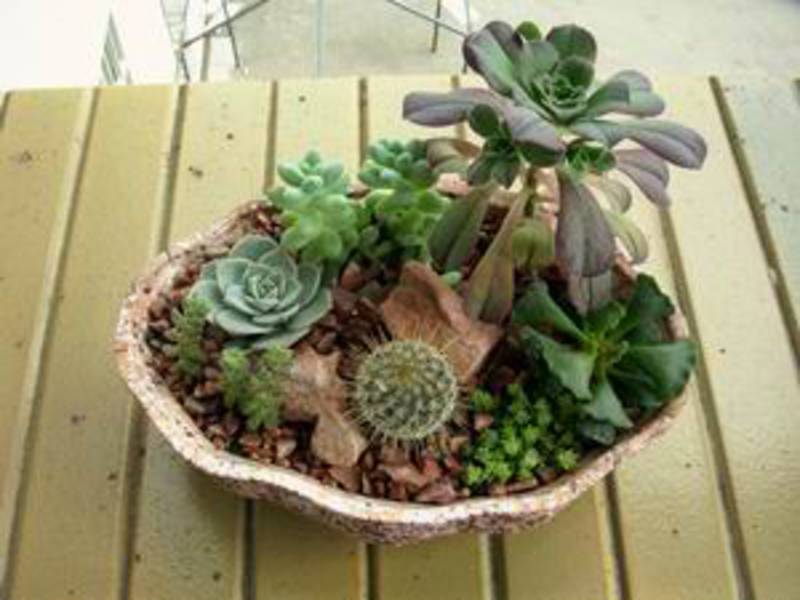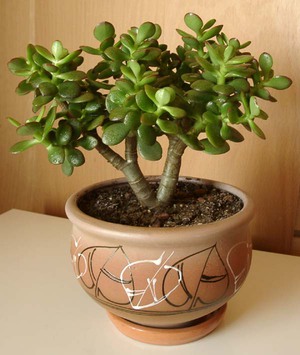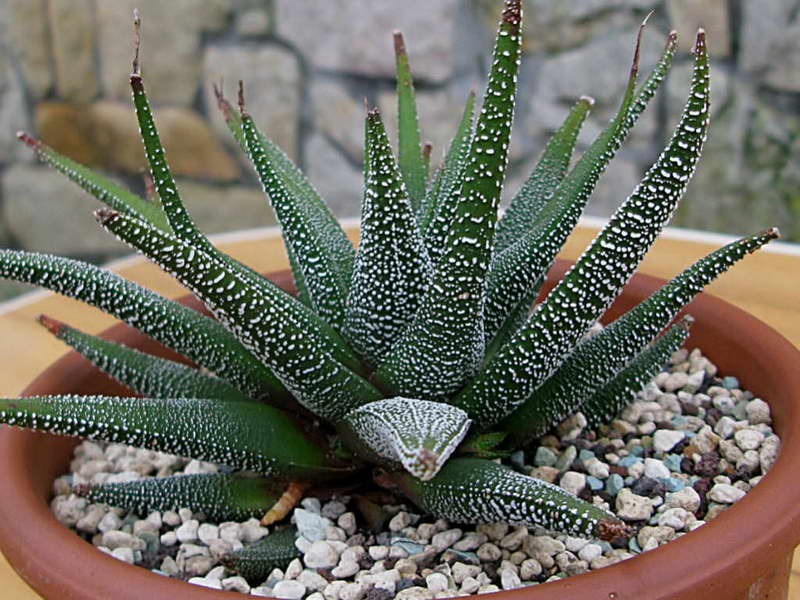What are the attractions of plants called succulents? Florists love them for their bizarre shape, huge palette of colors and great opportunities when creating artistic compositions. Novice gardeners prefer this particular group of plants because of their colorful appearance and unpretentious nature, because caring for them is very simple.
Content
What are succulents?
Most of themcame to us from hot countrieswhere dry spells last much longer than the rainy season. Because of this, they are accustomed to storing moisture in their fleshy, succulent leaves and thick stems. Succulent is translated from Latin as "juice". This feature has become fundamental in the classification of such plants, despite the fact that they belong to different families.
Views
Today there are many varieties: agave, cacti, aloe, bryophyllum, gorse, aisaceae, glophyllum, euphorbia, wild rose, Kalanchoe, wild and others. The most famous and widespread are cacti.
All types are conventionally divided into two -by the characteristics of fluid accumulation:
- Thickened leaves with dense cuticles have leafy succulents. They are usually round in shape, often assembled into a socket, which helps them save water. Among them the most known to us are aloe, agave, gasteria, haworthia. They are used in traditional medicine.
- In trunks and stems, stem succulents hold water for stock. Instead of leaves, they often have thorns, and the root system is capable of accumulating liquid from the surface and from groundwater. Some have ribbed stems, which help to avoid damage in the form of cracks with excess moisture. During the rainy season, most species of stems form special shoots on which leaves, flowers and fruits are formed.
Care
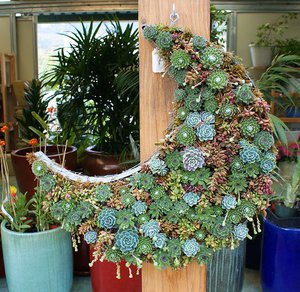 These plants are undemanding to care for, but you still need to know what rules to follow. All species are the same in terms of conditions of detention. All of them need good lighting, therefore, the best place for them is the windowsill, and from the end of spring their place is on the balcony. They need moderate watering, once a week in warm weather, and once a month in cold weather. Water for irrigation should be taken at room temperature.
These plants are undemanding to care for, but you still need to know what rules to follow. All species are the same in terms of conditions of detention. All of them need good lighting, therefore, the best place for them is the windowsill, and from the end of spring their place is on the balcony. They need moderate watering, once a week in warm weather, and once a month in cold weather. Water for irrigation should be taken at room temperature.
To ensure a comfortable wintering, the temperature should be within 13-15 degrees. They are grown in flat pots with good soil drainage. Succulents need a substrate with moderate moisture levels. Ready-made mixes sold in stores often contain peat, which is not at all suitable for plants. They need a mixture of leafy, turfy soil and coarse sand in equal proportions.
Do not forget about soil fertilization. In winter, they do not need to be fed, which cannot be said about the growing season. Fertilizer is applied in spring 1 time per month. Purchase top dressing at flower shops.
It is not necessary to replant the plant annually. It all depends on its appearance. So, if he is full of energy, grows, blooms and does not get sick, then you should not disturb him with transplants.If the plant has stopped growing, the skin has lost its elasticity or the usual color, and the plant itself in the spring is wrinkled, then it is urgent to take measures to transplant it into another soil. Transplant into dry potting soil and water after a few days.
Names with photos
The most exotic representatives of these plants are the inhabitants of the sultry African deserts - succulents resembling stones. This family is called Aizon... Living stones include: lithops, fritias, dinteranthus, fenestraria, titanopsis, and conophytum. However, once a year, the incredible happens and these extraordinary stones give birth to a beautiful flower of magnificent tenderness and grace.
Sedum
Stonecrop belongs to the fatty plant family (take a look at the photo below). It grows naturally in Central and South America, Madagascar. This easy-to-grow plant has branchy, fleshy stems, and equally dense leaves that look like a boat or cylinder. The following species grow at home:
 The sedum is thick-leaved. Its difference in cylindrical leaves is red spots on the tips.
The sedum is thick-leaved. Its difference in cylindrical leaves is red spots on the tips.- Sedum red-colored. Its leaves are almost completely red.
- The sedum of Morgan has hanging ampelous stems, which are densely covered with small gray leaves. In summer, pink flowers appear.
- The sedum is not typical for this plant species. It grows as a bush up to 60 cm, it has long shiny leaves.
Haworthia
Haworthia from the lily family is a representative of South Africa, see photos. This very popular and unpretentious plant has a beautiful rosette of fleshy, long, tapering leaves. Peduncles are formed, but it is better to cut them off so as not to take away the juices from the plant, since they are completely non-decorative.
At home they grow:
- Pearl-bearing Haworthia. Its leaves up to 8 cm long have white blotches. Flowers appear inconspicuous on a long peduncle with racemose inflorescences.
- Haworthia is striped. Its leaves are longer and sharper than the previous species, the blotches are smaller, forming dense rows.
- Haworthia is chess. The leaves are short and wide, triangular in shape, with denticles along the edges. Round blotches are located only at the bottom of the sheet, the upper part consists of a translucent mesh of light stripes.
- Haworthia Reinwardt is an exception to the rule, since it does not form rosettes of leaves, instead of them there is a stem up to 20 cm, which is covered with thick triangular leaves.
Pachypodium
The pachypodium belongs to the Kurtov family. Under natural conditions, it grows in Africa and on the island of Madagascar. The plant is tree-like, its thick the stem retains moisture well and covered with thorns. The plant sheds narrow and long leaves for the winter. There is rubber in the juice of the leaves. The pachypodium is unpretentious and is often found in florist's rooms. At home, its types are grown:
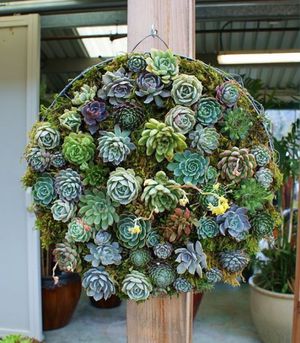 Succulent pachypodium has a branched stem, fluff on young shoots. The leaves are lanceolate, pubescent. The needles at the base of the leaves are arranged in pairs. It blooms with small pink flowers.
Succulent pachypodium has a branched stem, fluff on young shoots. The leaves are lanceolate, pubescent. The needles at the base of the leaves are arranged in pairs. It blooms with small pink flowers.- Pachypodium Lame is a large solitary plant, its stem resembles a cylinder. Long leaves are slightly pubescent, in which needles are grouped at the base of three pieces.
- The short-stemmed pachypodium is very unusual. The main stem is in the form of a tuber, from which short silvery shoots protrude. Few pubescent leaves are formed, the shape is oblong, ovoid. In winter, when there are no leaves on the plant, it resembles a stone. Flowers appear light yellow, large in size.
Fat woman
Fat woman from the Tolstyankov family native to South Africa... This very popular plant does not have a typical appearance, as the genus is very numerous. Some have small scaly leaves, while others are large up to several centimeters. They also differ in shape and color, they are even gray and red.The stems branch and stand upright. At home, the following types are bred:
- The oval fat woman (Money tree) grows as a large tree-like plant. Oval leaves shine, fleshy up to 5 cm long, their color is dark green, edged with red. The plant forms aerial roots. The flowers appear white or pink.
- The lymphatic fat woman is distinguished by scaly triangular small leaves. It grows very quickly, unpretentious, yellowish flowers appear.
- The fat woman is perforated. The name characterizes the species itself, the stem passes through the leaves covering it in pairs up to 2.5 cm long.
Adenium
This succulent belongs to the Kurtov family, native to central and South Africa. A tree plant grows up to 10 m in natural conditions.At home, it is rather capricious, reaches 30 cm... The stem is able to retain moisture, thickened with lateral shoots. Poisonous juice. Leaves are green, fleshy waxy, arranged in a linear fashion. Flowers, similar to roses, are red or pink in color, for which the plant is called the Rose of the Desert. It drops the leaves for the winter so that the young reappear in the spring. A popular type is Adenium thick. More about varieties and cultivation.
Compositions of succulents
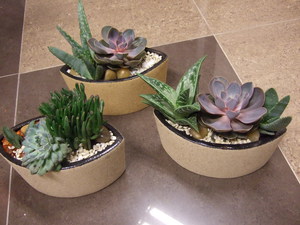 Fans of floristry appreciated these plants, for them it is one of the favorite materials for creating original compositions for the interior of the house. Dwarf species of Crassula, Rosularia, Gasteria, Stonecrop, which are ideal for miniature rocky gardens, are planted in low spacious bowls made of ceramics or wood.
Fans of floristry appreciated these plants, for them it is one of the favorite materials for creating original compositions for the interior of the house. Dwarf species of Crassula, Rosularia, Gasteria, Stonecrop, which are ideal for miniature rocky gardens, are planted in low spacious bowls made of ceramics or wood.
In transparent containers, for example, glasses, aquariums, flasks look great three or four kinds... The wall panel looks interesting from them. Up to 60-70 types of such babies can be placed on the windowsill. Some craftsmen create “desert corners” on it, originally complementing varieties with various colors with several stones with uneven edges.
The surface of the earth is sprinkled with sand or gravel. In this case, you need to know that the height of the bowl does not exceed 1/3 the height of the largest plant. For example, you can create a composition from Haworthia, Gasteria, Ekeveria, Lithops, cactus. They can be planted with pachyphytum, which has thick, bluish, rounded leaves that resemble grapes. You can also supplement the company with small plants with creeping stems, their shoots will be interesting to hang from the edges of the bowl. For this effect, sedums, monantes, and lymphatic fatty are taken.
Succulents - spectacular and original plants, which can be taken care of even by a novice amateur gardener. Often they are planted in one bowl, creating a combination of complementary colors. Place them on a windowsill, balcony or other well-lit place to decorate the interior, adding a fashionable touch to it.
